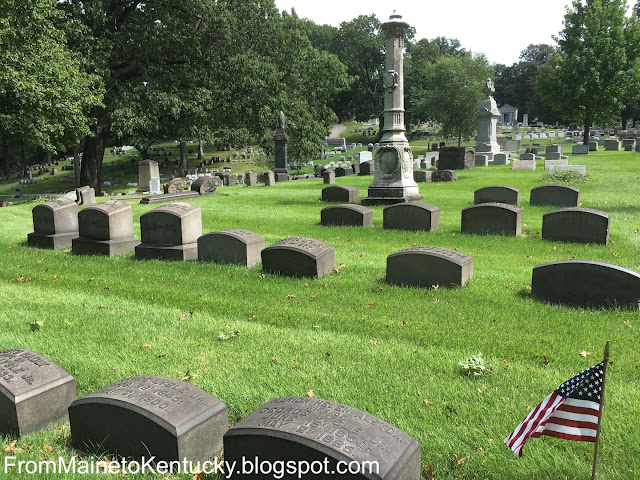 |
| Summer 1982; see Throwback Thursday-Cousins Day |
I have identified 49 second cousins and over 180 third cousins. Note that on my father's mother's side (Adsit-Ashby), I have no known first cousins, second cousins, or third cousins. This makes it difficult to confirm more distant, colonial New England cousins on this side because I've got lots of other colonial New England in other ancestral lines.
Some families were more difficult to track forward than others; it depended on where they lived and whether I could find useful obituaries in online newspapers (among other resources). Then there are families with common names: Bailey, Hunter, Murphy, Smith, Walsh, as well as branches of cousins who moved abroad, making it harder to find them.
Notes:
* The couple's name in bold are my second great-grandparents.
* In many cases, the number of third cousins is an estimate (especially McAlpin-Rose, Greeley half-third cousins, and Hunter-Freeland).
* I refer to 3 siblings under my maternal lines and 4 siblings under my paternal lines as I have one sibling with whom I share my father and not my mother.
* The colors are based on my long-time color-coding system.
PATERNAL-PATERNAL
James Pyle (1823-1900) and Esther Abigail Whitman (1828-1921) had:
7 children (only 2 had children)
9 grandchildren
10 great-grandchildren
40 great-great-grandchildren (me, my 4 siblings, no first cousins, my 31 second cousins, and 4 third cousins)
David Hunter McAlpin (1816-1901) and Frances Adelaide Rose (1829-1870) had:
10 children
23 grandchildren
48 great-grandchildren
(at least) 139 great-great-grandchildren (me, my 4 siblings, no first cousins, my 31 second cousins, and (at least) 103 third cousins)
PATERNAL-MATERNAL
James Monroe Adsit (1809-1894) and Susan Arville Chapin (1820-1906) had:
7 children
4 grandchildren
1 great-grandson (my dad)
5 great-great-grandchildren (me, my 4 siblings, no first cousins, second cousins, or third cousins)
Daniel Morgan Ashby (1828-1907) and Mary Elizabeth Gorin (1833-1891) had:
6 children
3 grandchildren
1 great-grandson (my dad)
5 great-great-grandchildren (me, my 4 siblings, no first cousins, second cousins, or third cousins)
MATERNAL-PATERNAL
Henry Clay Copeland (1832-1912) and Sarah Lowell (1833-1916) had:
3 children
6 grandchildren
7 great-grandchildren
20 great-great-grandchildren (me, my 3 siblings, my 5 first cousins, my 11 second cousins, no third cousins)
Samuel Sewall Greeley (1824-1916) and his first wife Anne Morris Larned (1828-1864) had:
4 children
10 grandchildren
27 great-grandchildren
(at least) 57 great-great-grandchildren (my half-third cousins)
Samuel Sewall Greeley (1824-1916) and his second wife Eliza May Wells (1839-1880) had:
5 children
3 grandchildren
7 great-grandchildren
20 great-great-grandchildren (me, my 3 siblings, my 5 first cousins, my 11 second cousins, no third cousins)
MATERNAL-MATERNAL
James Hunter (1844-1902) and Mary Freeland (1850-1902) had:
10 children
10 grandchildren
16 great-grandchildren
(at least) 28 great-great-grandchildren (me, my 3 siblings, my 5 first cousins, my 7 second cousins, my (at least) 12 third cousins) (Some with the surname Hunter are very difficult to trace, as the names are somewhat common.)
George Lysle, Jr. (1845-1900) and his first wife Marion Helen Alston (1850-1885) had:
2 children
7 grandchildren
7 great-grandchildren
21 great-great-grandchildren (me, my 3 siblings, my 5 first cousins, my 7 second cousins, my 5 third cousins)
George Lysle, Jr. (1845-1900) and his second wife Edith O. Hadly (1869-1933) had:
2 children. One son died young and the other married, but didn't have any children. No half-third cousins here.
I have added these third cousins to my tree in Family Tree Maker and plan to upload it to Ancestry, MyHeritage (and perhaps other sites) to help connect me to more cousins. I have added many surnames to my tree and have already identified several cousins on the DNA testing sites while doing this project.








































